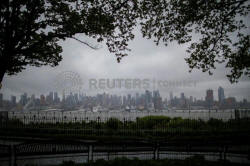|
The
Federal Railroad Administration and Federal Transit
Administration on Friday jointly issued the final Environment
Impact Statement and Record of Decision for the Hudson Tunnel
Project, key steps for the project that is a crucial economic
link in the U.S. Northeast.
"This is a big step for the Northeast, and for the entire
country, as these tunnels connect so many people, jobs, and
businesses," U.S. Transportation Secretary Pete Buttigieg said
in a statement.
Approximately 450 trains every weekday use the Hudson Tunnel
and, before COVID-19, approximately 200,000 daily passenger
trips took place.
The Hudson Tunnel Project is one component of the Gateway
Program, a major project to overhaul much of the aging rail
infrastructure in the New York City area.
U.S. passenger railroad Amtrak in April asked Congress for $16
billion for Gateway, including $6.7 billion over five years for
the Hudson Tunnel project. The project would result in four
modern tubes connecting New Jersey to New York Penn Station in
Manhattan.
The 111-year-old New York City-area rail tunnel was damaged in
2012 when Superstorm Sandy flooded parts of the city.
The department noted no federal funding has been dedicated for
the Hudson Tunnel project to date. Completion of these two steps
is a prerequisite for either agency to direct future federal
funding to advance this project through pre-construction
activities such as engineering, final design development,
property acquisition and construction.
The Hudson Tunnel project includes building a new rail tunnel
under the Hudson River and rehabilitating the existing tunnel,
known as the North River Tunnel, once the new tunnel is
complete.
When rehabilitation is complete, both tunnels would provide
redundant capacity and increased operational flexibility for
both Amtrak and NJ Transit.
President Joe Biden has proposed a $2.3 trillion jobs and
infrastructure spending that includes $39 billion for
modernizing the northeast rail corridor.
In total, Amtrak is seeking $31 billion from Congress over five
years to overhaul the Northeast Corridor, the Boston to
Washington, D.C., corridor that is the busiest passenger rail
route in the country.
(Reporting by David Shepardson; Editing by Robert Birsel)
[© 2021 Thomson Reuters. All rights
reserved.] Copyright 2021 Reuters. All rights reserved. This material may not be published,
broadcast, rewritten or redistributed.
Thompson Reuters is solely responsible for this content.

|
|





